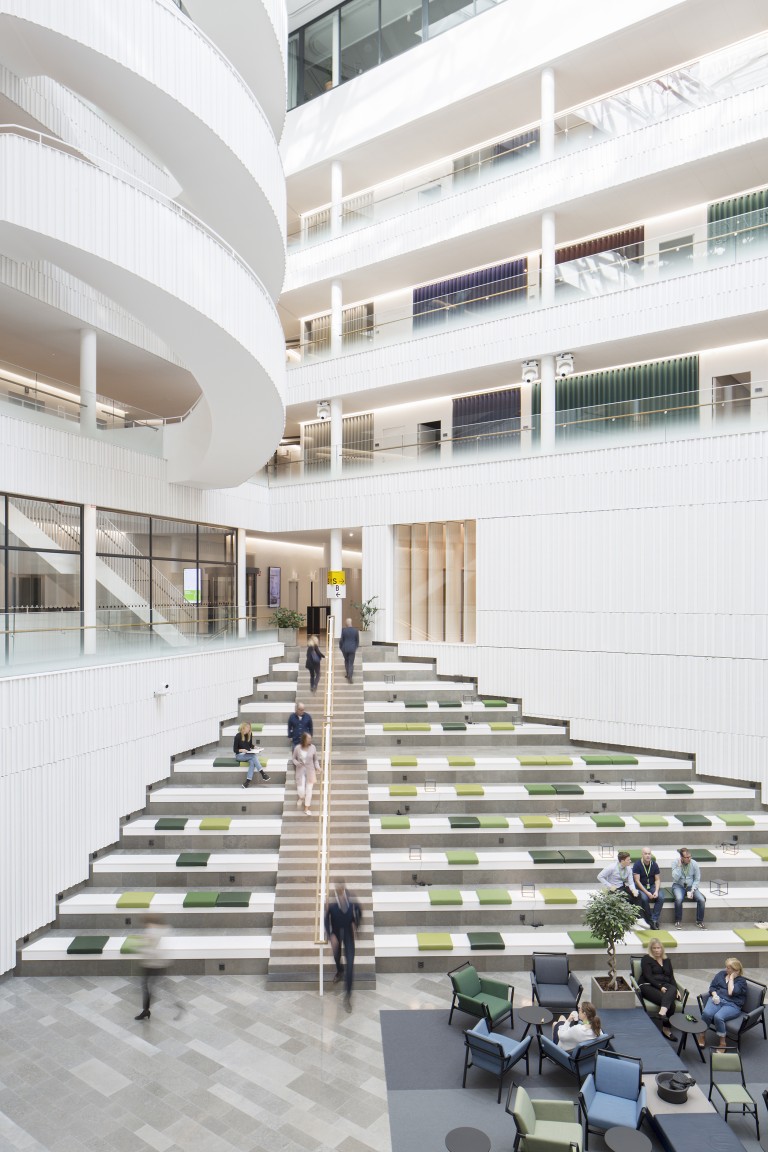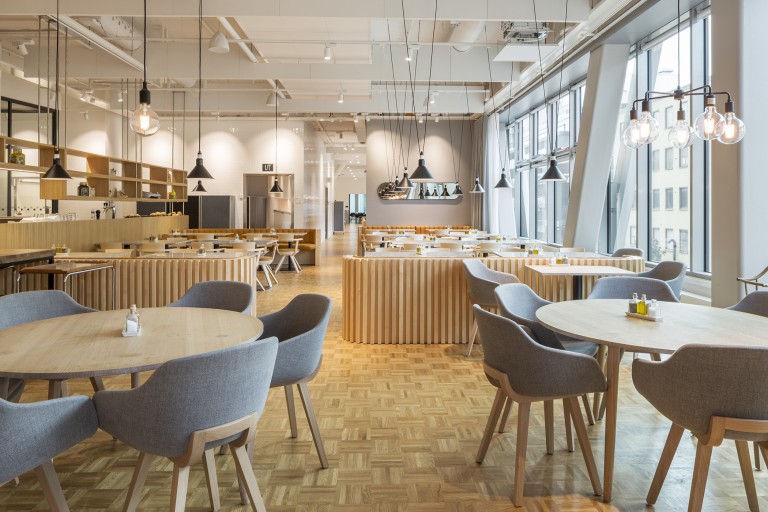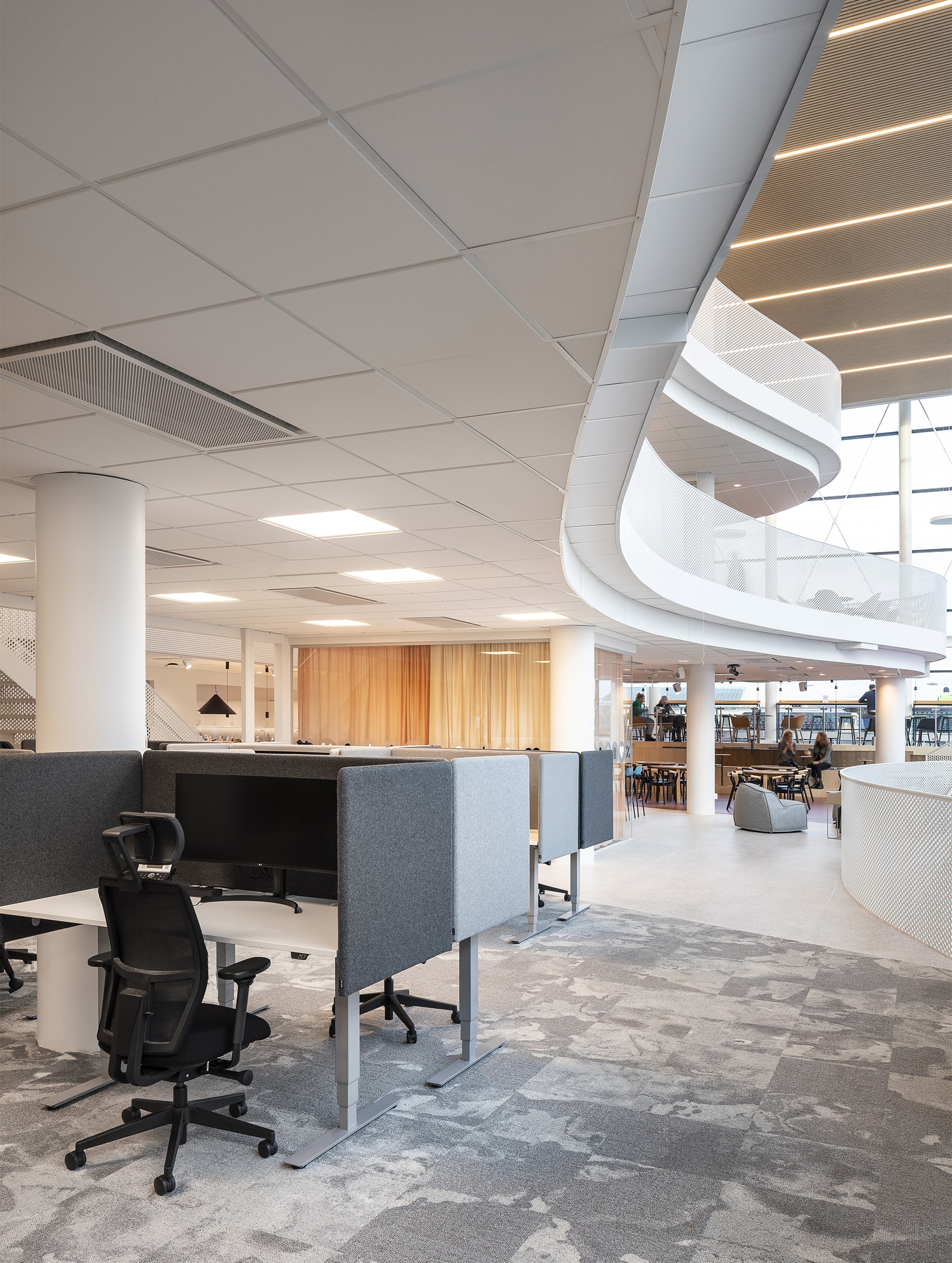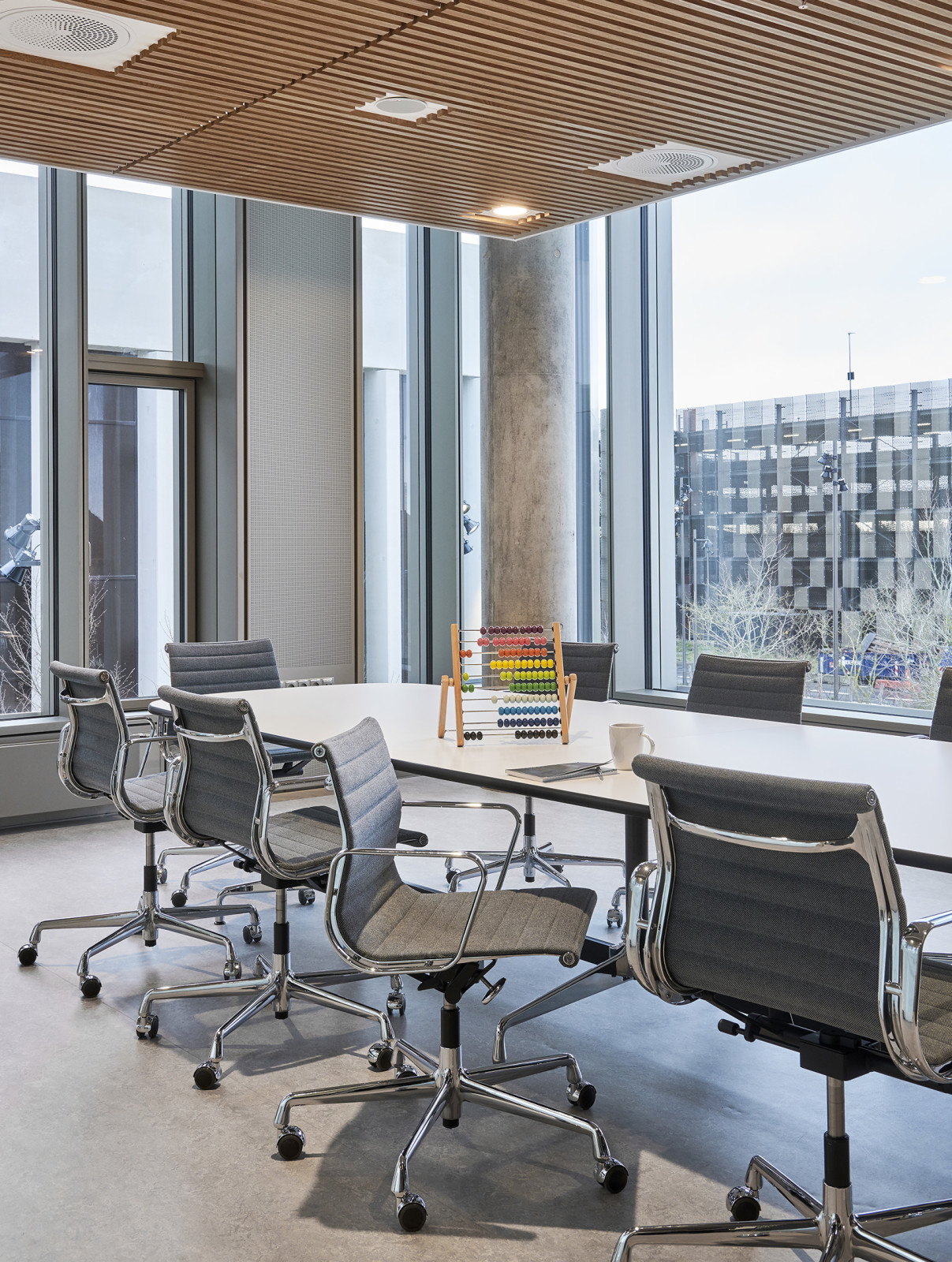SEB Stockholm
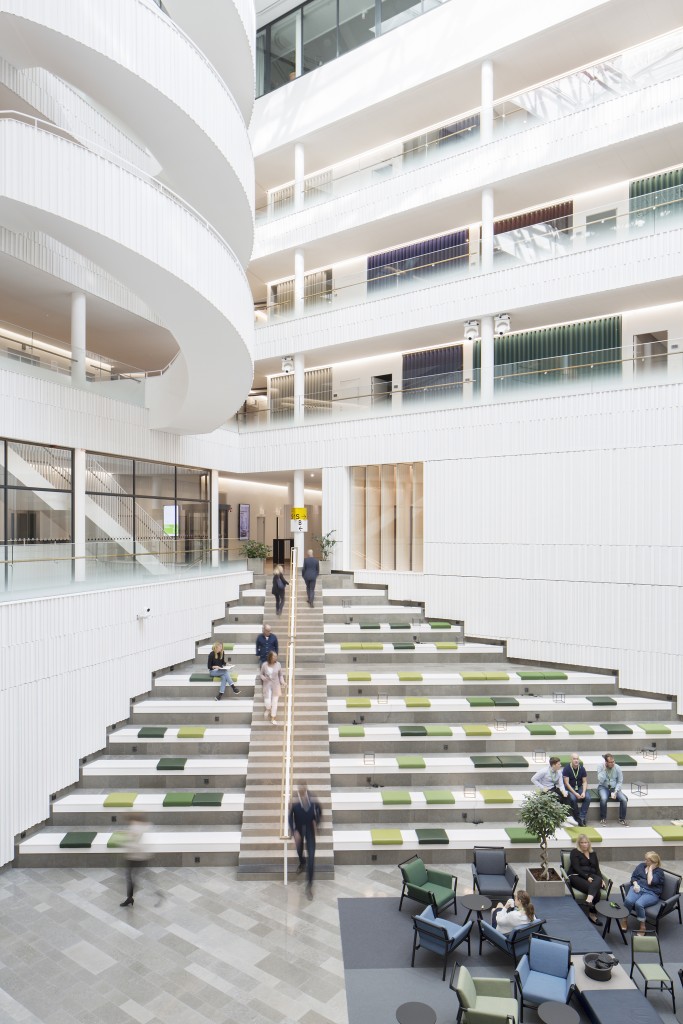
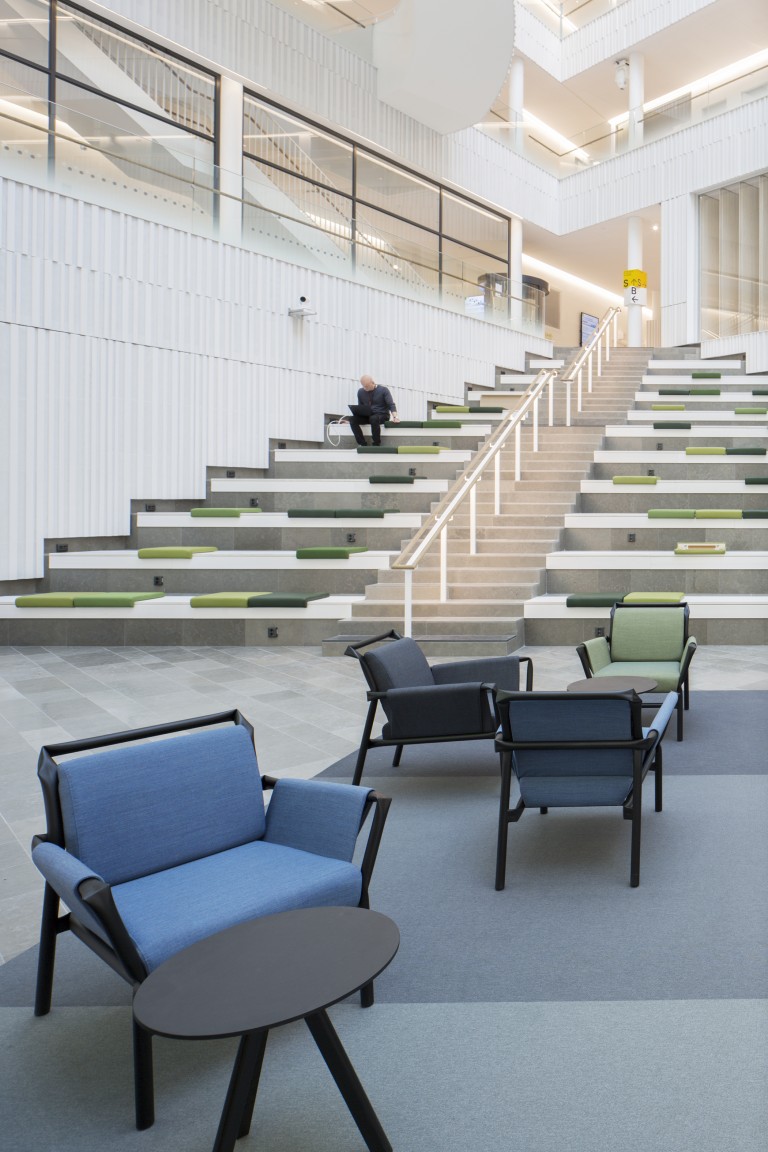
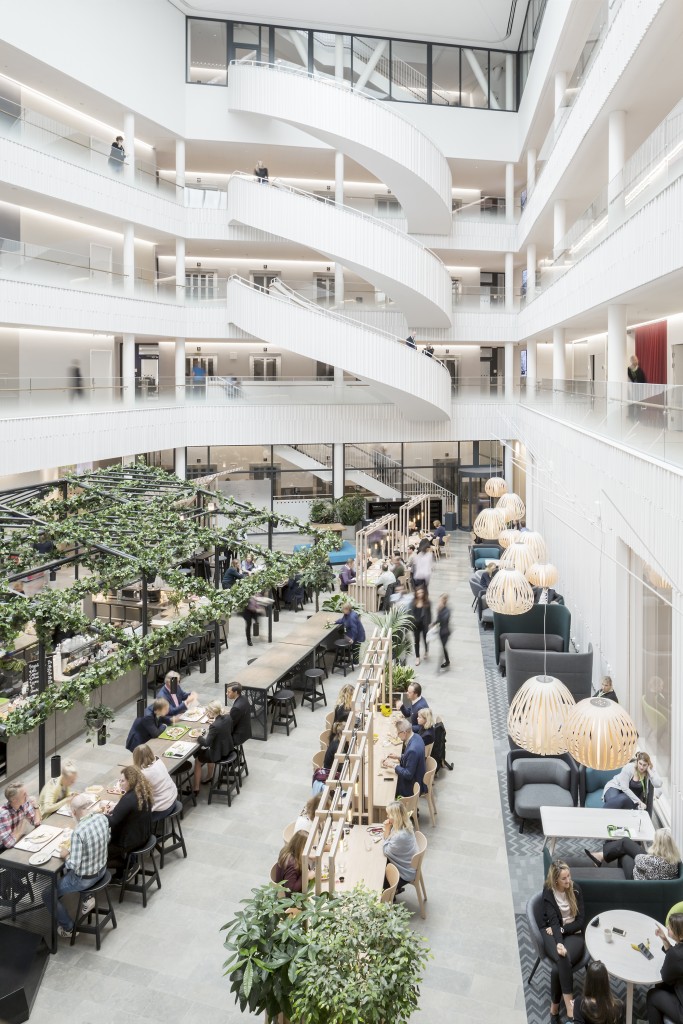
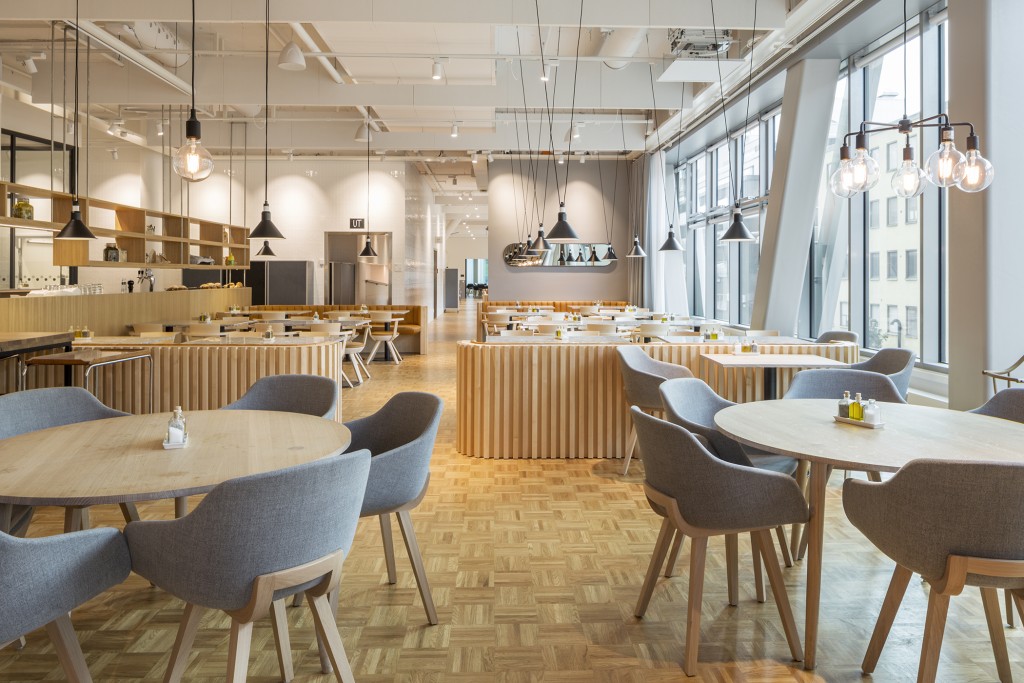

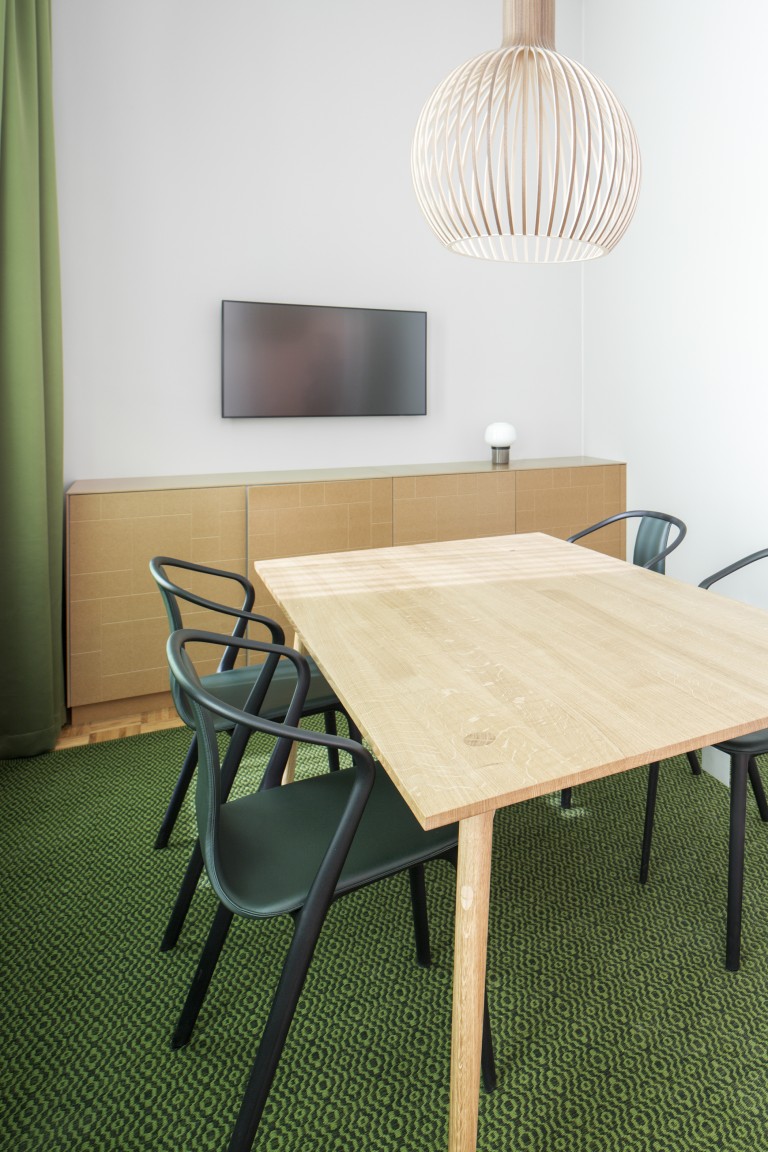

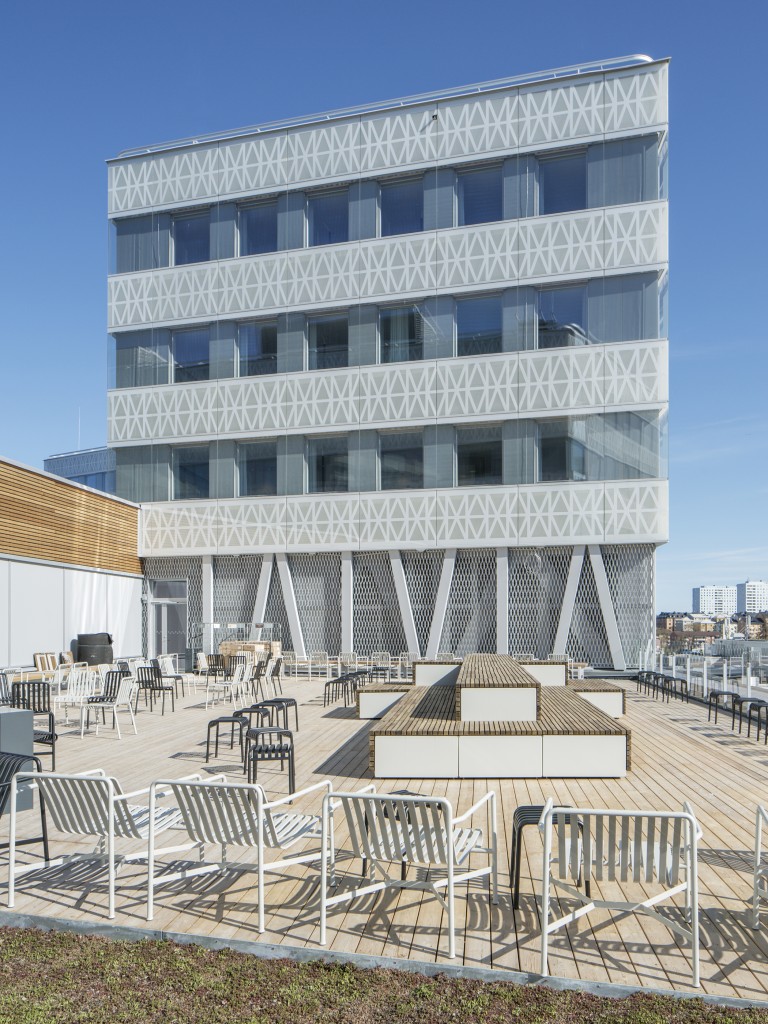

When one of Sweden's biggest banks made the move from three locations to a single shared site, it resulted in an office space of 72,000 m2, 600 meeting rooms and, last but not least, 4,500 employees. SEB’s headquarters in Arenastaden, Solna, is Sweden’s biggest office project of all time.
With the aim of improving efficiency and collaboration, SEB moved three of its Stockholm offices to a single location. A huge logistics project that took place in two stages. The three-part building houses a total of 4,500 employees, who all have access to an individual desk.
Future-proofing
Wingårdhs was responsible for the entire interior environment, with future-proofing of the building being an important mandate.
“With such a huge project it’s more a matter of being timeless rather than trendy,” says Helena Toresson, interior architect at Wingårdhs. “It’s about keeping in mind the company’s values and not looking too much at current trends.”
Creating future-proof environments does not just involve working methods and expression. It’s equally important that the interior design can stand the test of time.
“It’s about creating a sustainable interior design with furniture that can endure wear and tear and ideally materials that will age with dignity,” says Sara Helder, interior architect at Wingårdhs.
In addition to delivering and installing all interior furnishings, Input interior also ensured that the furniture fulfilled requirements for sustainability, ergonomics and quality. By offering its IMS (Interior Management System) service Input interior has also ensured that SEB itself can control its furniture flow on an ongoing basis. A register of all interior furnishings is created in the system by labelling each item with a unique QR code that is uploaded into a database. This tool then makes things easier in the event of an inventory or reorganisations.
Anna Sandefeldt, Global Manager of Workplace Development and Interior Design at SEB, feels the system has worked really well.
“We have a simple means of keeping track of our furniture: what there is and what we have, and where it should be. Flexibility is a keyword for us, and sometimes that requires rearrangement, such as an office being turned into a meeting room and vice versa. That’s where the QR labelling is great because we can then see exactly what we have and how we can rearrange things.”
Spontaneous meetings
An abundance of seating and flexible solutions make it possible to work and hold meetings anywhere at all in principle.
“SEB had a desire to be visible and to be more spontaneous in holding meetings. Since they were previously spread between three offices, the objective was “one SEB”, bringing their employees together and guiding their movements in such a way that they come into contact with one another,” explains Helena.
The three buildings are therefore interconnected and incorporate four atriums that promote meetings, interaction and communication.
“The atriums have a variety of functions. The first is a hive of activity and movement. This is what you first encounter when arriving at SEB and the last area you pass through when going home. A barista bar screens off the busier areas and offers a choice of seating: from barstools to lounge furniture. The second atrium is founded on flexibility: with a large terraced staircase, stackable furniture and chairs that can all be rearranged to suit SEB’s requirements. The third is more relaxed with a homely feel. The fourth serves as an alternative to your own workplace,” concludes Sara Helder.
